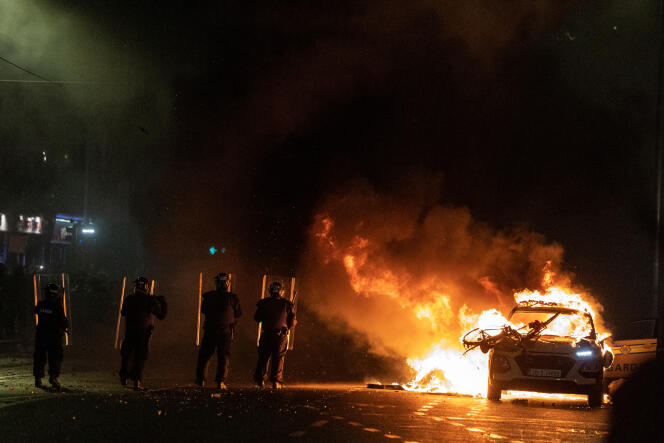


The riots that erupted in Dublin on the evening of Thursday, November 23 shocked the people of Ireland. This is the first time in decades that they have witnessed such violence. Dozens of young men took to the streets of Dublin, from Parnell Square in the north of downtown to the surroundings of Trinity College and the popular Temple Bar district. They burned police cars (eleven cars were completely or partially destroyed), looted shops and set four buses and a tram on fire. The rioters "brought shame on Ireland," said Prime Minister Leo Varadkar on Friday.
Their motivations are not clear, but many of them were shouting anti-immigrant slogans, according to witnesses quoted by Irish media. Drew Harris, the chief commissioner of the Garda (the Irish police force) assured everyone that the four hundred officers deployed on Thursday evening were facing a "lunatic hooligan faction driven by far-right ideology."
These riots occurred after a woman and three children were injured in a knife attack by a 40-year-old on Thursday afternoon, near Parnell Square, near the exit of an elementary school. One of the children is in a serious condition.
The rumor immediately spread on social media that the assailant was of foreign origin. According to the BBC, he is an Irish citizen and has been living in Ireland for about twenty years. The Irish media stated that one of the people who helped the victims by stopping the alleged assailant was a Brazilian Deliveroo driver named Ciao Benicio.
Ireland is a republic made up of 5 million people with one of the most dynamic economies in the European Union. The country is not accustomed to violence like this. The Garda was quickly overwhelmed, taking several hours to restore peace in the center of Dublin, which is normally filled with students and tourists. They made 34 arrests. However, these actions are not surprising to politicians, social workers and experts who, for several months, have been warning about the rise of far-right groups in a country that, until now, seemed immune to anti-immigrant sentiment.
Numbering in the thousands, supporters of far-right groups such as the National Party, Ireland First or the Irish Freedom Party are relatively loosely organized, lack charismatic figures or elected officials, but are very active on social media and in the streets. They are now almost always seen on the sidelines of pro-immigrant protests in Dublin, Cork or Limerick. They also protest under the windows of hotels or emergency accommodation centers for asylum seekers, and some set fire to tents of homeless asylum seekers in May in the center of Dublin.
You have 55% of this article left to read. The rest is for subscribers only.
